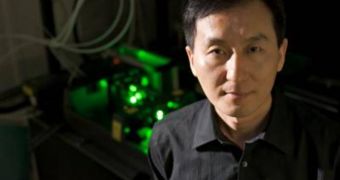Experts at the University of Rochester have developed a novel method of using lasers, which allows them to convert regular incandescent light bulbs into power-sippers able to light with the same intensity as a 100-watt bulb, while consuming the same amount of electricity as an 60-watt one. These bulbs are also able to supply a much more pleasant and comforting light than compact fluorescent light bulbs (CFL), the optics research team recently announced.
The secret behind the laser action is the fact that the tungsten filament, the tiny wire that can be seen inside conventional light bulbs, gets “sculpted,” so to speak. The lasers create a unique array of nano- and micro-scale structures on its surface, which in turn make the material irradiate light much more efficiently, while maintaining a low power consumption level. Details of how the exact process works will be available to readers in a forthcoming issue of the scientific journal Physical Review Letters.
“We've been experimenting with the way ultra-fast lasers change metals, and we wondered what would happen if we trained the laser on a filament. We fired the laser beam right through the glass of the bulb and altered a small area on the filament. When we lit the bulb, we could actually see this one patch was clearly brighter than the rest of the filament, but there was no change in the bulb's energy usage,” explained University of Rochester associate professor of optics Chunlei Guo, who was a part of the research team.
According to the experts, the secret to creating the new type of filament is to use a very intense, and yet very short beam of stimulated light, called a femtosecond laser pulse. This acts in a fraction of a fraction of a second, and creates the necessary structures almost instantly. No doubt, prolonged filament exposure to the high intensity laser would damage it, and would also damage the glass of the bulb itself. “We knew it should work in theory, but we were still surprised when we turned up the power on this bulb and saw just how much brighter the processed spot was,” Guo concluded.

 14 DAY TRIAL //
14 DAY TRIAL //